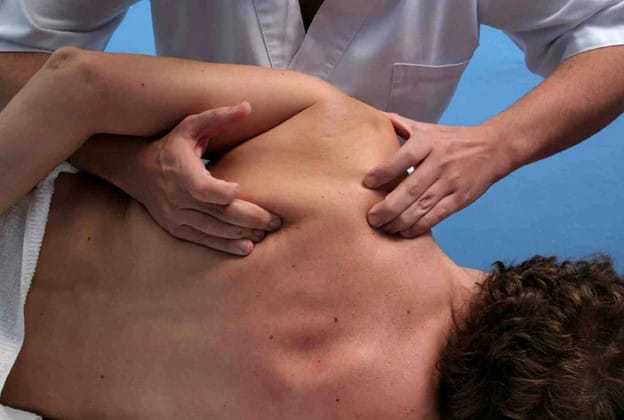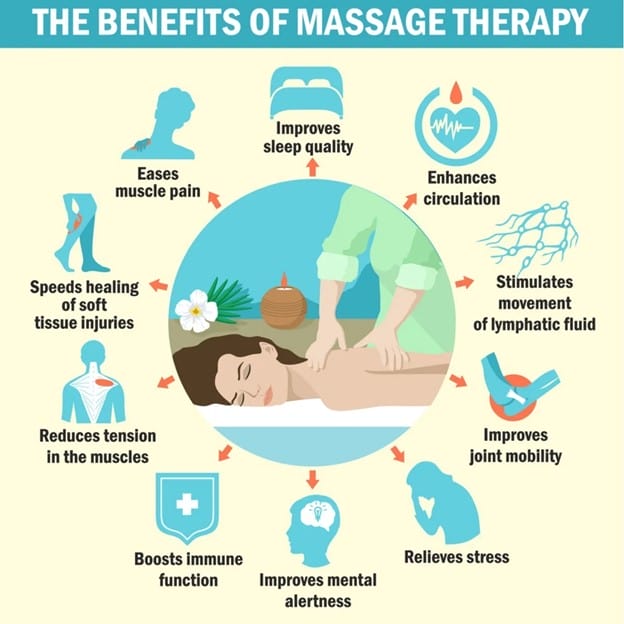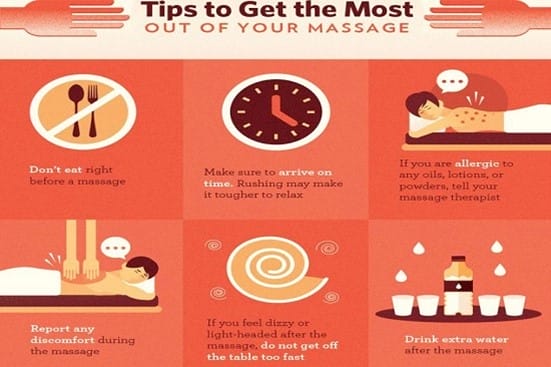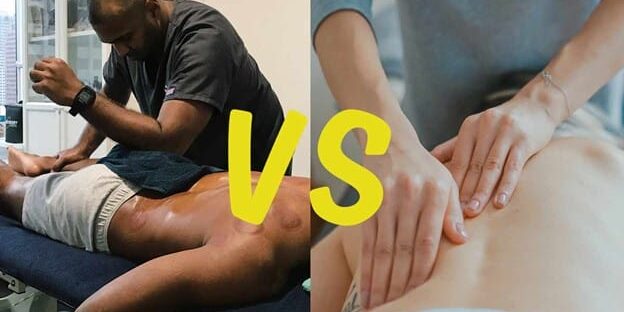Not All Massages Are Created Equal—Here’s What You Need to Know
Let’s get one thing straight: picking the wrong massage is a waste of time and money. If you’re in pain, you need a solution, not some random rubdown that leaves you exactly where you started. If you just want to relax, you don’t want someone digging into your muscles like they’re mining for gold.
So, which massage is right for you? Are you looking for pure relaxation, or do you need serious muscle relief? At The Self Centre Massage and Wellness, we’ve helped thousands of people make the right choice—and now, we’re making it simple for you.
Here’s the truth about Swedish vs. Deep Tissue Massage—and how to finally get the relief you deserve.
Swedish Massage: The Stress-Buster That Melts Your Worries Away
Swedish massage is what most people picture when they hear the word “massage.” It’s smooth, it’s relaxing, and it’s exactly what you need if stress has you feeling like a wound-up spring.
What it does: Swedish massage uses long, flowing strokes, gentle kneading, and light to medium pressure to improve circulation, ease tension, and promote total relaxation. It’s not meant to fix deep-seated pain, but deep tissue massage may help relieve tightness and everyday muscle stiffness.
If you leave work feeling drained, if your shoulders are permanently glued to your ears from stress, or if you just want to feel human again, Swedish massage is your answer.

Deep Tissue Massage: The Pain Fixer That Gets Results
Swedish massage is great for relaxation, but if you’re dealing with chronic pain, injuries, or stubborn knots, it won’t cut it. That’s where deep tissue massage technique comes in.
What it does: Deep tissue massage targets the deeper layers of muscle and connective tissue with slow, firm pressure and focused techniques. This is not the kind of massage where you fall asleep—it’s the kind that digs in, breaks up tension, and actually fixes the problem.
It’s not always comfortable, but let’s be real—if you’ve had tight knots in your back for years, did you really think a light rub was going to make them disappear?

Swedish vs. Deep Tissue: The Brutal Truth
Let’s break it down:
Pressure:
- Swedish: Light to medium, designed for relaxation.
- Deep Tissue: Firm to intense, designed for muscle recovery.
Purpose:
- Swedish massage involves stress relief, circulation, and relaxation.
- Deep Tissue: Chronic pain relief, deep tension release, and injury recovery through specialized massage techniques.
Pain vs. Comfort is essential in any type of massage therapy.
- Swedish: Feels amazing—no pain, just relaxation.
- Deep Tissue: Can be uncomfortable, but fixes real muscle issues.
Results:
- Swedish: You’ll feel refreshed, loose, and stress-free.
Deep Tissue: You may feel sore afterward, but your pain will actually improve.

Common Myths About Massage Therapy (And the Truth)
People have a lot of misconceptions about massage therapy. Let’s clear up the biggest myths:
“Deep tissue massage has to hurt to be effective.”
No. Pain is not a requirement for results. While deep tissue massage can be intense, a skilled therapist will adjust the pressure to your tolerance. Discomfort is different from pain. A good massage therapist knows the difference and will work within your comfort zone to ensure effective treatment.
“Massage is only for relaxation.”
Wrong. While Swedish massage is great for relaxation, deep tissue massage is a powerful tool for recovery, pain relief, and even injury prevention. Athletes, people recovering from surgery, and those with chronic pain conditions use massage therapy as an essential part of their healthcare routine. Regular sessions can enhance mobility, improve posture, and even prevent future injuries.
“One massage is enough to fix everything.”
If you’ve had chronic pain for years, one session won’t magically undo the damage. While you may feel some relief after one massage, real, lasting improvement takes consistency. Think of it like working out—one gym session won’t make you fit, and one massage won’t completely fix years of built-up tension. Regular massage therapy, including Swedish and deep tissue, is key to maintaining a pain-free body.
“Massage flushes toxins out of your body.”
This is one of the biggest myths out there. Massage improves circulation and can help your body’s natural detox process, but it doesn’t magically “flush toxins” like some claim. What it does do is increase blood flow, ease muscle tension, and promote relaxation, which can make you feel refreshed and rejuvenated.
“You shouldn’t get a massage if you’re sore from working out.”
Actually, this is one of the best times for a massage! If you’ve had an intense workout and your muscles are stiff, a sports or deep tissue massage can help speed up recovery by reducing inflammation and improving circulation. Just make sure to communicate with your therapist so they can adjust the pressure accordingly.
How to Prepare for Your Massage
Most people think they just walk in, lie down, and let the therapist do all the work. That’s a mistake. Here’s how to make sure you get the best results from your session:
- Hydrate: Muscles that are well-hydrated respond better to massage therapy. Drink plenty of water before and after your session.
- Communicate: If the pressure is too much (or not enough), let your therapist know. You’re not being rude—you’re ensuring you get the best experience.
- Breathe: Holding your breath through deep tissue work only makes it harder for your muscles to release tension. Take deep breaths and allow your body to relax.
- Stretch Post-Massage: Gentle stretching after your session can extend the benefits and keep your muscles loose longer.
What Happens After Your Massage?
Your body doesn’t stop working just because the session is over. Here’s what to expect after your massage:
- After a Swedish massage: You’ll feel light, relaxed, and calm. Some people experience a slight “massage high” due to improved circulation and endorphin release.
- After a deep tissue massage: You may feel sore for a day or two—kind of like after a workout. This is normal and a sign that your muscles are responding to the therapy.
- Drink water: This helps flush out toxins released during your massage and keeps your muscles hydrated.
- Rest or move gently: If you just had deep tissue work, avoid heavy lifting or intense workouts for 24 hours.

Biggest Mistake People Make When Booking a Massage
Here’s what happens way too often: People book the wrong massage and end up frustrated. They walk into a spa, pick something at random, and then wonder why they didn’t get the results they wanted.
If you have serious back pain and you book a Swedish massage, you’ll walk out thinking, “Well, that was nice, but my back still hurts.” If you just want to relax but accidentally book deep tissue, you’ll be gritting your teeth through half the session.
How to Avoid This Mistake
- Identify your goal before booking. Are you looking for stress relief? Go for Swedish. Do you have chronic pain or knots? Book deep tissue.
- Read descriptions carefully. Don’t just assume all massages provide the same benefits. Check what’s included in the service.
- Ask the therapist. A reputable massage clinic will guide you toward the right treatment based on your symptoms.
- Communicate your preferences. Let the therapist know if you want firmer or lighter pressure, if you have problem areas, or if you’re new to massage therapy.
A little preparation ensures you get exactly what you need instead of wasting time on a session that doesn’t meet your expectations. And if you’re still not sure? That’s what professionals are for. We’ll help you figure out the best type of massage for your needs.
Massage Therapy Is More Than Just a Treat—It’s an Investment in Your Health
Think massage is just for “pampering”? Wrong. Regular massage therapy, including types such as Swedish and deep tissue, has been proven to:
- Lower blood pressure and improve circulation with the help of various massage types.
- Reduce stress, anxiety, and improve sleep.
- Strengthen the immune system by stimulating lymphatic drainage through various massage techniques.
- Speed up post-exercise recovery and reduce muscle soreness.
It’s not just about feeling good for an hour—it’s about making your body work better for the long haul. Whether you’re dealing with stress, chronic pain, or mobility issues, massage therapy is one of the smartest health investments you can make.
Still Unsure? Let’s Make This Easy.
At The Self Centre Massage and Wellness, we don’t do one-size-fits-all massages. We take the time to assess your pain points, listen to what you actually need, and customize the massage to get you real results.
📍 Location: 2915 Ellwood Dr. SW, Edmonton, AB
📞 Call now to book: 780-485-1404
💻 Book online: https://theselfcentre.com/
Stop guessing. Stop living with pain. Get the right massage today—and actually feel better tomorrow.








